No Fiasco In Sight: The Rise of Chianti Classico
Close your eyes and imagine that you don’t know what’s in the glass in front of you. You swirl and sniff, allowing its mature aromatics to take hold of you and pull you closer. You still find vibrant dark red fruit, along with a dusting of savory spice, hints of cedar and something that reminds you just a bit of damp earth, or possibly animal musk. As you take your first sip, you immediately know it’s from Italy, due to the silkiest of textures being washed across your palate by zesty acids. Its fruits are soft now, mature, but there You’ve already guessed that it’s Sangiovese, but your thoughts are turning to Brunello--because isn’t Brunello di Montalcino the big game in town? What about Vino Nobile? No, this is showing Sangiovese purity, not the help of international varieties being blended in. The Tuscan coast? Wrong again. You grab the bottle and look at the table in a mixture of fascination and surprise--you’re drinking a twenty-year-old Chianti Classico, and it’s one of the best wines you’ve ever tasted. How can this be? It’s a shame that so many people don’t believe that Chianti can mature beautifully alongside the greatest wines of Italy. The fact is that not all of it can, This producer has a family history in the region that goes back to the 7th century, along with a very famous relative, Bettino Ricasoli, “The Iron Baron,” who helped create the recipe for Chianti Classico in the late 1800s. As for the winery itself, it’s young by Italian standards, but I guarantee you that in its short track record of twenty-five years, what they’ve already established speaks volumes to what the future will hold. The winery is Rocca di Montegrossi, without a doubt one of the greatest producers in both Chianti Classico and Tuscany as a whole. The man behind the scenes is Marco Ricasoli, and the wine that will prove his vision to you, as well as the quality of their local terroir, is the Chianti Classico San Marcellino.
Going back to the winery’s twenty-five-year history, the defining moment for its flagship wine and Marco’s success goes back to his father, who planted the San Marcellino vineyard in the late sixties. Unfortunately, he passed soon after, but Marco’s mother continued to carry the torch, producing wine from the family vineyards (under a different name) while raising her children, surrounded by vines and wine. It was only in 1994, when a falling out between siblings caused Marco to leave the family winery, that his mother gave him San Marcellino to begin his own winery; hence, Rocca di Montegrossi was born. The Making of San MarcellinoIt didn’t take long for Marco to realize the importance of San Marcellino, but also the necessity to reorganize the vineyard, work toward establishing This change was the result of Marco’s belief in Chianti Classico, in the native varieties of his home, but also in the potential of both Merlot and Cabernet (not for blending with Chianti) when planted in the proper location. So, unlike most producers of the time, he planted international varieties later than most for his Super Tuscan Geremia, and moved his best Sangiovese over to the San Marcellino through the early 2000s. Starting in 2006, Marco also decided to add to the blend a small amount of a unique, native variety named Pugnitello, which complements Sangiovese’s color, structure and aromas. In another bold decision, especially for a young winery, Marco has insisted on a long maturation process prior to release, as San Marcellino spends two years maturing in a combination of medium-toasted barrique and tonneau (about twice the size of 225 litre barrique), before being laid to rest in bottle for another two years prior to release. What emerges is a Chianti Classico, today with the prestigious title “Gran Selezione,” that requires patience, but repays you tenfold with time in the cellar. San Marcellino has been in a state of evolution since the very beginning, continuing to this day. Yet through it all, what is obvious from my recent tasting, is that in all of its forms, it was the quality of its fruit, coupled with Marco’s insightful winemaking, that has maintained its World-Class standing.
As for the wines, they were glorious. Tasting them from the most recent 2015 vintage back to 1999 showed just how well San Marcellino matures over time. Some vintages are destined to go into the record books for Rocca di Montegrossi, others can be approached sooner, and some have found their way to a perfect drinking window. I, for one, would proudly bring any single one of them to my table, to share with family, friends or even the most discerning collectors.
On to the tasting notes:Rocca di Montegrossi Chianti Classico San Marcellino Gran Selezione 2015 - The nose was primary yet remarkably fresh, showing ripe Rocca di Montegrossi Chianti Classico San Marcellino Gran Selezione 2014 - The nose was dark, earthy, almost animal, and quite alluring, showing moist mineral tones over crushed black cherry, with hints of exotic spice, turning more to strawberries, green olive and undergrowth with time in the glass. On the palate, I found a savory, suave expression, as cherry and spice gave way to wild herbs, minerals and a mix of bright acids over round tannins. The finish was long, lightly structured, showing savory earth and herbs over dried cherries. The ‘14 will never stand shoulder-to-shoulder with the best vintages, but there’s something already attractive about it today, with easily five to ten years of maturity in store for us. (93 points)
Rocca di Montegrossi Chianti Classico San Marcellino Gran Selezione 2012 - Here I found a bright expression of fresh strawberries, with exotic spices, sweet cherries, moist, earthy mineral tones--somehow reminding me of Rayas. On the palate, silky textures coasted effortlessly across the senses, delivering bright cherry fruits in a soft yet energetic expression. Fine tannins slowly saturated, slightly firming the experience, yet not drying it out, as inner florals and herbal tones resonated throughout. Stunning acids added renewed life to the long finish, displaying medium structure, with tart cherry, savory herbs and inner florals. The 2012 is already showing some early signs of development and providing an enjoyable drinking experience. (92 points) Rocca di Montegrossi Chianti Classico Gran Selezione 2011 - The nose was dark and intense with masses of black cherry, sweet spices, wild exotic herbs, and minerals lifting from the glass, so pure and energetic as dried florals emanated from the glass. On the palate, I found soft, silky textures, coating the senses with ripe cherries and sweet spice, as earthy minerals and spice saturated all they touched and left a coating of fine tannin. The finish was medium in length and vibrant, with framing tannins underlying tart cherry, spices and herbs. This was amazingly fresh for the vintage and a pleasure to drink. (93 points) Rocca di Montegrossi Chianti Classico San Marcellino Gran Selezione 2010 - Here I found intense minerals giving way to moist black earth, as a Rocca di Montegrossi Chianti Classico Vigneto San Marcellino 2009 - The nose was dark, savory, and earthy, with mineral-infused crushed cherry, yet a bit muddled, giving way to leather and hints of dried florals. On the palate, I found velvety textures balanced by fresh acids, as ripe black cherry and sweet herbs flooded the senses, leaving mineral tones and hints of adolescent tannin. The finish was long, resonating on grippy tannin and a bit drying, showing savory herbs, minerals and hints of undergrowth. The 2009 never really comes into balance, and although enjoyable now, it teeters on the edge of decline. (87 points) Rocca di Montegrossi Chianti Classico Vigneto San Marcellino 2008 - The nose was angular and even a bit lean, showing bright cherry tones and hints of strawberries on the vine, as savory spice and herbs evolved in the glass. On the palate, soft textures gave way to pretty red fruits and hints of spice, with just enough acidity to keep it fresh, yet a bit hollow toward the middle. The finish was medium in length, resonating of tart red fruits, with hints of inner florals and light lingering tannin. (91 points)
Rocca di Montegrossi Chianti Classico Vigneto San Marcellino 2006 - The nose was dark and earthy, showing crushed plum over black cherry, sweet herbs and tobacco, which gained more animal and moist earth tones along with a hint of sour cherries. On the palate, I found soft, enveloping textures driven by vibrant acids, as tart cherry coasted across the senses, leaving minerals, savory spice, pretty dried inner florals and leather. The finish was long, with hints of tannin, but showing wonderful, energizing acids, creating a juicy expression, as tart red fruits, minerals, spices and inner florals resonated. The 2006 is a beast of a wine, yet so balanced, already providing pleasure, but with years of evolution ahead of it. (95 points) Rocca di Montegrossi Chianti Classico Vigneto San Marcellino 2004 - The nose showed depths of earthy dried cherry, leather, wild herbs, brown spice, cedar box, and lifting dried floral tones, in a mature yet wonderfully fresh expression. On the palate, silky textures soothed the senses, as a staining of red berry fruits, hints of earth, minerals, light acids, and spice slowly saturated. So pleasant and ready. A bit of inner animal and earth. The finish was long, tugging at the cheek with lingering acid and tannin, resonating dried cherry, inner florals and spice. The Rocca di Montegrossi Chianti Classico Vigneto San Marcellino 2003 - The nose was dark, but a bit dank, showing ripe, crushed black cherry, hints of moist cedar, mint, verging on menthol, and exotic spices. On the palate, I found velvety textures, as sweet and sour cherry and plum flooded the senses, leaving moist earth-tones, minerals, a hint of animal muskiness, and finishing on sweet inner herbs. The finish was medium in length, with a bit of a sour cherry and acidic twang, savory herbs, and wild berry, as hints of round tannin lingered. Suffering from the warm vintage, the 2003 is soft, low on acid, drinking well now, yet on the decline. (87 points)
Rocca di Montegrossi Chianti Classico Vigna San Marcellino Riserva 1999 - The nose was fully mature, yet totally classic and seductive, showing sour cherry offset by sweet plum, with dried florals, rubbed mint leaf, hints of cedar box, pipe tobacco and sweet spice. On the palate, I found soft, enveloping textures, giving way to dried red fruits, as vibrant acids added life, gaining inner earth, minerals, florals and subtle spice. The finish was long, resonating on sour cherry, dried inner florals, leather strap and earthy mineral tones, all kept in check through brisk acids. The ‘99 was glorious in its maturity; earthy, yet fresh with no hard edges at this stage. (93 points)
Credits and ResourcesArticle, Tasting Notes, and Bottle Photos: Eric Guido Special thanks to Mark Fornatale, Skurnik Wines, and Marco Ricasoli of Rocca di Montegrossi Shop our selection of Rocca di Montegrossi wines here.
|

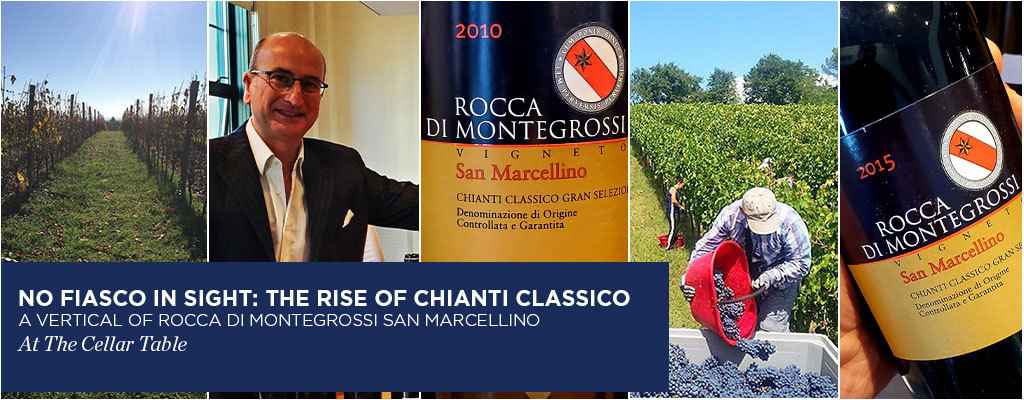
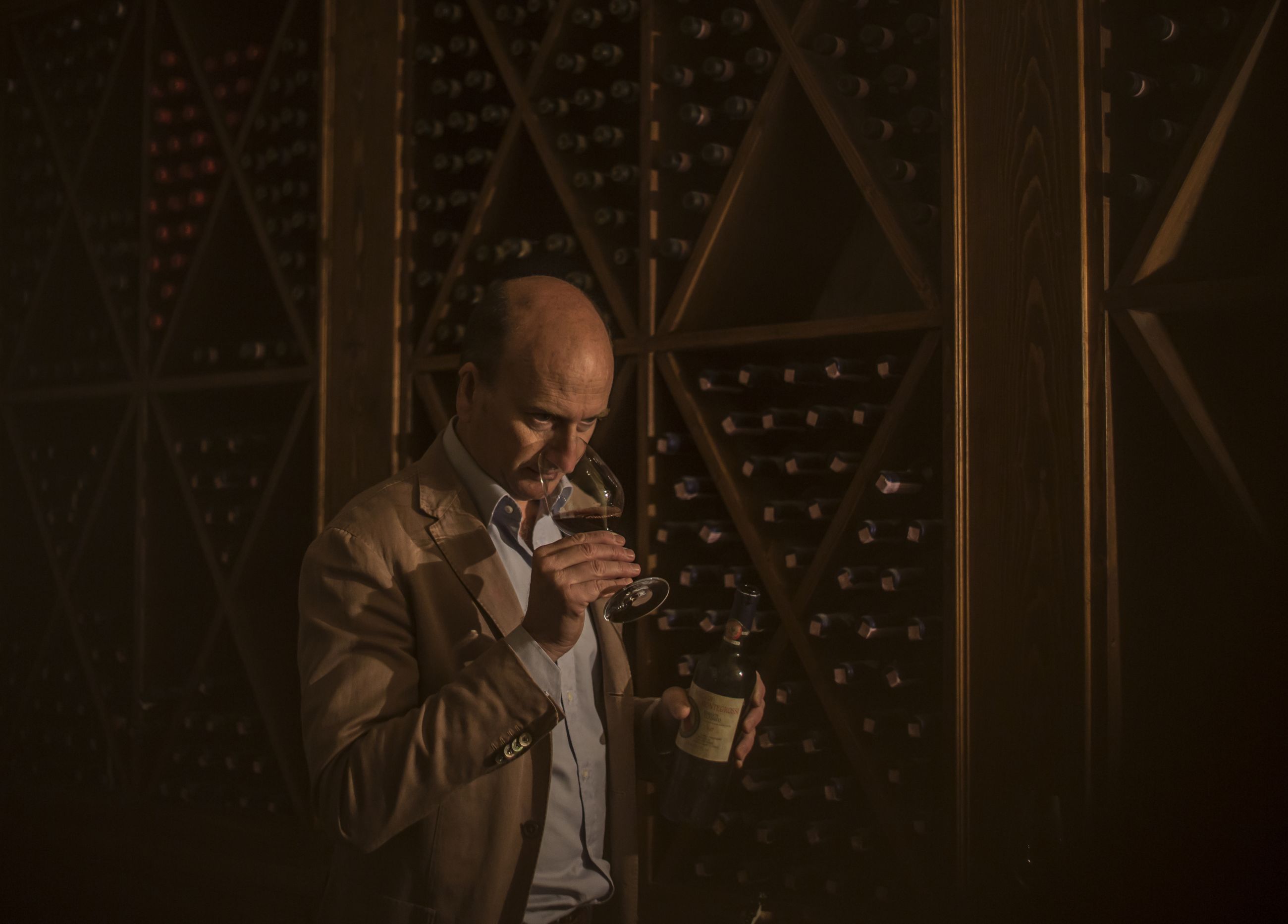 is still something primary. Now you open your eyes and notice that the color is a deep red, with just a hint of browning toward the rim, yet this wine looks impossibly young.
is still something primary. Now you open your eyes and notice that the color is a deep red, with just a hint of browning toward the rim, yet this wine looks impossibly young. .jpg) but there are many very special pockets of terroir, clones, and producers who have been creating either 100% varietal Sangiovese or Sangiovese-dominated Chianti Classico that can not only stand the test of time, but also do it at a much lower price than the competition. Le Pergole Torte, Cepparello, Percarlo, Felsina Rancia, Monsanto Il Poggio and Castell'in Villa’s Riserva are just a handful that you should know--but none of them are the producer of the wine that sat in front of me on this day.
but there are many very special pockets of terroir, clones, and producers who have been creating either 100% varietal Sangiovese or Sangiovese-dominated Chianti Classico that can not only stand the test of time, but also do it at a much lower price than the competition. Le Pergole Torte, Cepparello, Percarlo, Felsina Rancia, Monsanto Il Poggio and Castell'in Villa’s Riserva are just a handful that you should know--but none of them are the producer of the wine that sat in front of me on this day.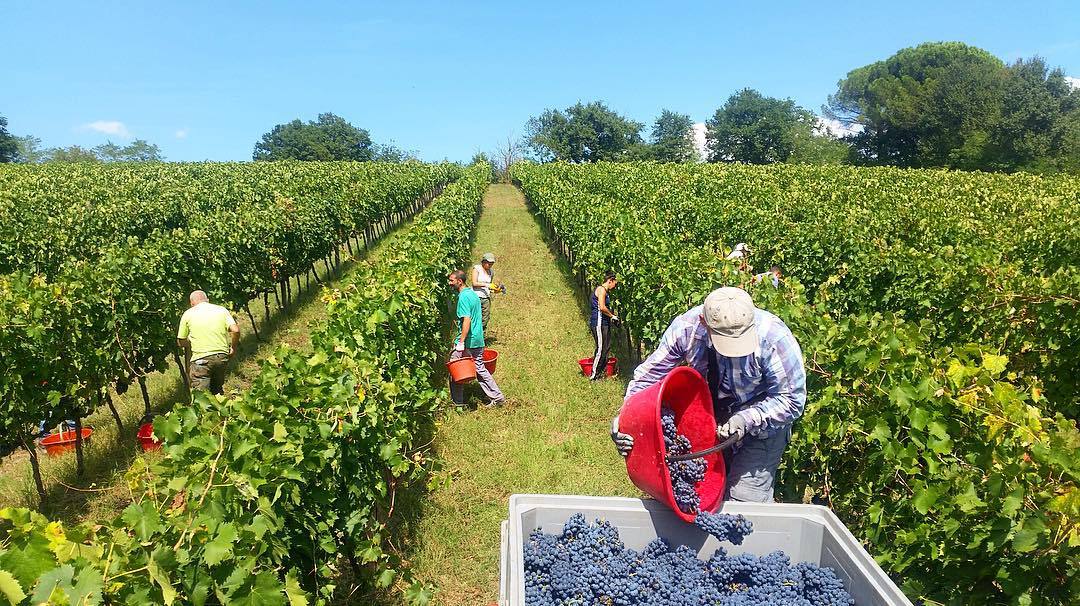 You’ll find Rocca di Montegrossi near Monti, in the greater subzone of Gaiole, which sits at the southeast border of the region, with Radda to its north (another part of Chianti known for its long-lived wines), and Castelnuovo Berardenga to the south (an area known for wines of power and primary, sun-kissed fruit, yet when balanced, can also age for decades--think Felsina Rancia). When tasting the Chianti of Rocca di Montegrossi, its location makes perfect sense, as the wines seem to capture the best attributes of both neighboring regions. However, nearly any producer will tell you that the terroir of Chianti is so diverse that it’s difficult to make many generalizations. What Marco will offer to you, however, is that it’s the calcium-rich Galestro soils of his vineyards that impart the Chianti San Marcellino with its intense color, which remains stable, even after two decades in the bottle (the ‘99 is a good case in point).
You’ll find Rocca di Montegrossi near Monti, in the greater subzone of Gaiole, which sits at the southeast border of the region, with Radda to its north (another part of Chianti known for its long-lived wines), and Castelnuovo Berardenga to the south (an area known for wines of power and primary, sun-kissed fruit, yet when balanced, can also age for decades--think Felsina Rancia). When tasting the Chianti of Rocca di Montegrossi, its location makes perfect sense, as the wines seem to capture the best attributes of both neighboring regions. However, nearly any producer will tell you that the terroir of Chianti is so diverse that it’s difficult to make many generalizations. What Marco will offer to you, however, is that it’s the calcium-rich Galestro soils of his vineyards that impart the Chianti San Marcellino with its intense color, which remains stable, even after two decades in the bottle (the ‘99 is a good case in point)..jpg) organic practices, study the use of better clones, and identify which parcel was the absolute best. The first vintage, produced as a Riserva, was 1995, but even at this time, Marco used his best Sangiovese to go into their Super Tuscan, Geremia. Today, Geremia is a blend of Merlot and Cabernet, but in those days it was made to be the Rocca di Montegrossi flagship Sangiovese.
organic practices, study the use of better clones, and identify which parcel was the absolute best. The first vintage, produced as a Riserva, was 1995, but even at this time, Marco used his best Sangiovese to go into their Super Tuscan, Geremia. Today, Geremia is a blend of Merlot and Cabernet, but in those days it was made to be the Rocca di Montegrossi flagship Sangiovese. .jpg) Speaking of that vertical tasting
Speaking of that vertical tasting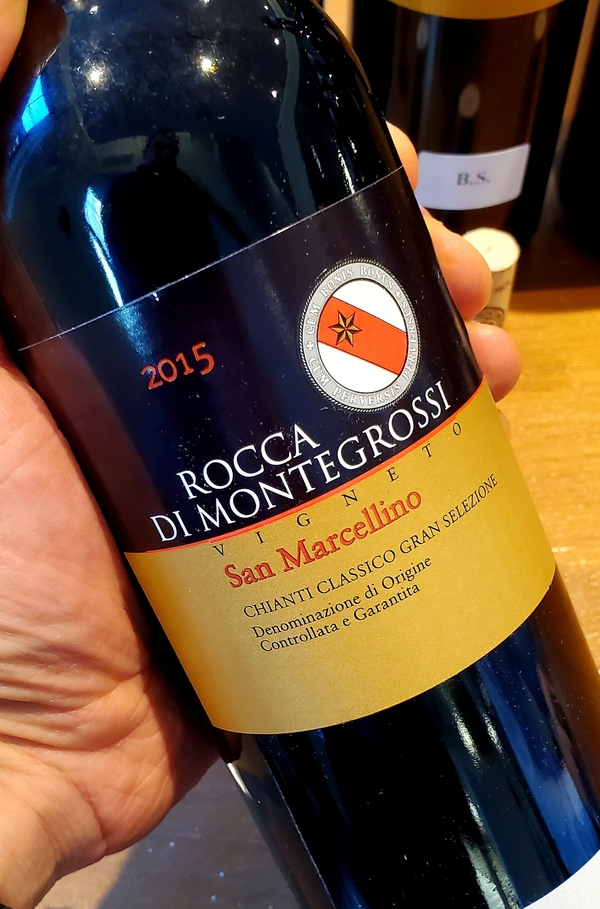 strawberries and cherries with sweet dusty minerals, hints of rosemary, mint leaf and dry earth tones. On the palate, I found silky, enveloping textures, giving way to pure red berry fruits, spices, laden with earthy minerals, and a brisk acid thrust over saturating tannin. The finish was long, spicy, and intense, as resonating acids maintained freshness over a web of tannin, while bright cherry lingered long. This is such an exciting vintage for San Marcellino, with the potential to last two decades or more in the cellar. (95 points)
strawberries and cherries with sweet dusty minerals, hints of rosemary, mint leaf and dry earth tones. On the palate, I found silky, enveloping textures, giving way to pure red berry fruits, spices, laden with earthy minerals, and a brisk acid thrust over saturating tannin. The finish was long, spicy, and intense, as resonating acids maintained freshness over a web of tannin, while bright cherry lingered long. This is such an exciting vintage for San Marcellino, with the potential to last two decades or more in the cellar. (95 points)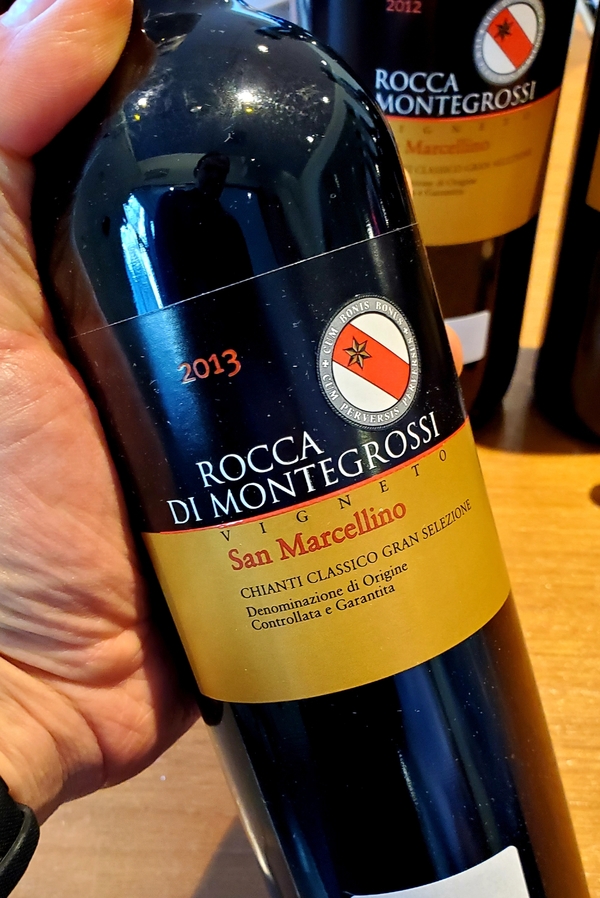 Rocca di Montegrossi Chianti Classico San Marcellino Gran Selezione 2013 - The 2013 showed depths of dark and haunting florals, crushed black cherry, sweet exotic spices, black earth, and spice, in what was a completely seductive bouquet. On the palate, I found soft textures, showcasing vibrant black cherry fruits, as intense spice and savory herbs flooded the senses, settling into a web of fine tannin. The finish was tight, youthful, and resonating on brisk acids, tart red fruits and spice. The 2013 is in need of years to find its perfect drinking window, but I can assure you that it will be glorious once it does. (95 points)
Rocca di Montegrossi Chianti Classico San Marcellino Gran Selezione 2013 - The 2013 showed depths of dark and haunting florals, crushed black cherry, sweet exotic spices, black earth, and spice, in what was a completely seductive bouquet. On the palate, I found soft textures, showcasing vibrant black cherry fruits, as intense spice and savory herbs flooded the senses, settling into a web of fine tannin. The finish was tight, youthful, and resonating on brisk acids, tart red fruits and spice. The 2013 is in need of years to find its perfect drinking window, but I can assure you that it will be glorious once it does. (95 points)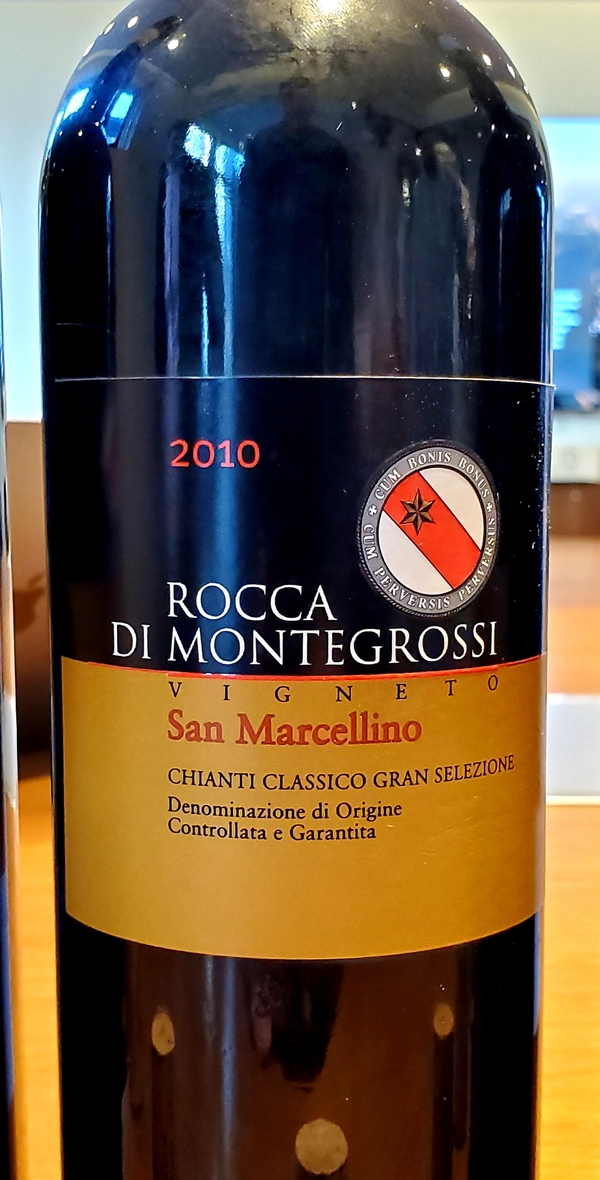 mix of savory cherries and strawberries developed, backed by hauntingly dark florals in an undeniably beautiful expression of Sangiovese. On the palate, silky, envolpoing textures were offset by brisk acids, minerals, and hints of savory spice, as tart cherry saturated along with fine-grained tannins--all kept in check by balanced acds. The finish was structured and long, with lingering savory spice and acids tugging at the senses, leaving sweet minerality in their wake. The 2010 is built for the ages. (96 points)
mix of savory cherries and strawberries developed, backed by hauntingly dark florals in an undeniably beautiful expression of Sangiovese. On the palate, silky, envolpoing textures were offset by brisk acids, minerals, and hints of savory spice, as tart cherry saturated along with fine-grained tannins--all kept in check by balanced acds. The finish was structured and long, with lingering savory spice and acids tugging at the senses, leaving sweet minerality in their wake. The 2010 is built for the ages. (96 points)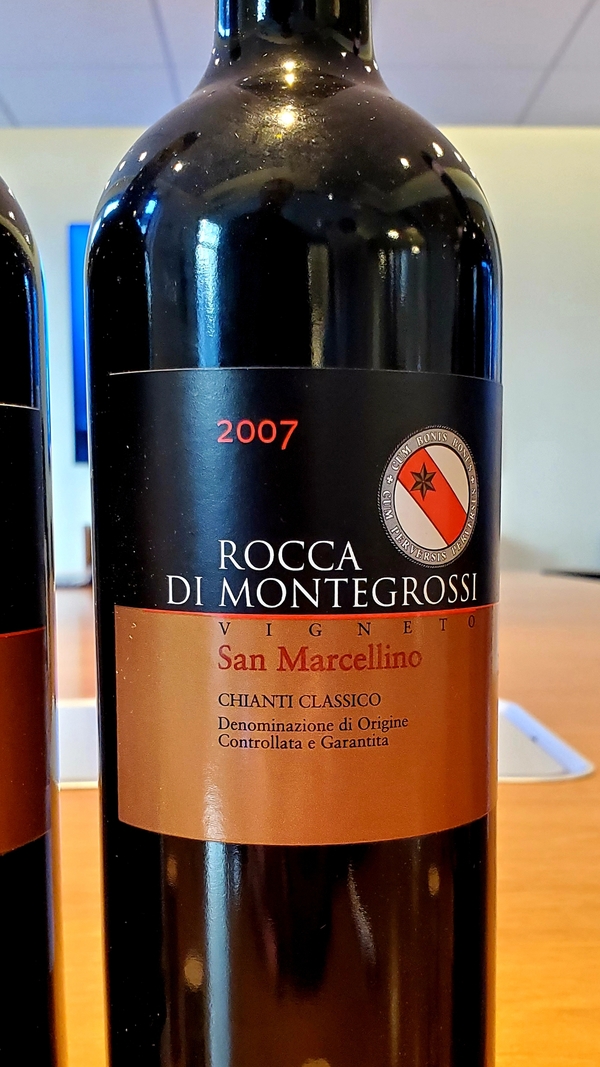 Rocca di Montegrossi Chianti Classico Vigneto San Marcellino 2007 - The nose was gorgeous and remarkably fresh, showing ripe cherry over sweet herbal tones, as it turned savory in the glass, to show a hint of animal musk over plum, leather, and dried florals. On the palate, velvety textures ushered in vibrant black cherry and brisk acids, as wild herbs, spices and still-youthful tannins saturated the senses, yet it remained remarkably fresh throughout. The finish was vibrant and long, tannic yet also brought to life by brisk acids, as tart black cherry and wild herbs lingered. (94 points)
Rocca di Montegrossi Chianti Classico Vigneto San Marcellino 2007 - The nose was gorgeous and remarkably fresh, showing ripe cherry over sweet herbal tones, as it turned savory in the glass, to show a hint of animal musk over plum, leather, and dried florals. On the palate, velvety textures ushered in vibrant black cherry and brisk acids, as wild herbs, spices and still-youthful tannins saturated the senses, yet it remained remarkably fresh throughout. The finish was vibrant and long, tannic yet also brought to life by brisk acids, as tart black cherry and wild herbs lingered. (94 points).jpg) 2004 is pleasant and in its drinking window, but still quite vibrant and in no fear of decline. (94 points)
2004 is pleasant and in its drinking window, but still quite vibrant and in no fear of decline. (94 points)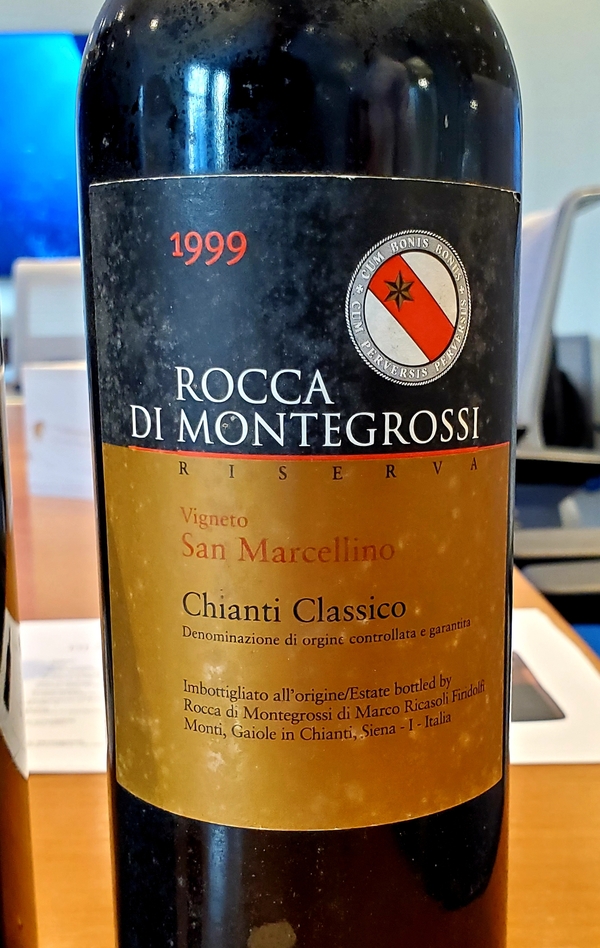 Rocca di Montegrossi Chianti Classico Vigneto San Marcellino 2001 - The nose was classic, open, yet refined, showing polished black cherry and hints of dried strawberries, over a dusting of crushed stone, menthol, savory spices, and dried roses, On the palate, I found remarkably soft textures, saturating the senses with tart cherry, spice and minerals, as lingering fine tannin slowly mounted, yet all so beautifully framed by balanced acidity. The only hints of maturity were dried inner florals and fall leaves. The finish was long, still lightly structured, and so fresh, as dried red fruits lingered amongst inner earth, mineral, and floral tones, with a bit of leather strap, and finally, hard red candies, which lingered long. (94 points)
Rocca di Montegrossi Chianti Classico Vigneto San Marcellino 2001 - The nose was classic, open, yet refined, showing polished black cherry and hints of dried strawberries, over a dusting of crushed stone, menthol, savory spices, and dried roses, On the palate, I found remarkably soft textures, saturating the senses with tart cherry, spice and minerals, as lingering fine tannin slowly mounted, yet all so beautifully framed by balanced acidity. The only hints of maturity were dried inner florals and fall leaves. The finish was long, still lightly structured, and so fresh, as dried red fruits lingered amongst inner earth, mineral, and floral tones, with a bit of leather strap, and finally, hard red candies, which lingered long. (94 points)


